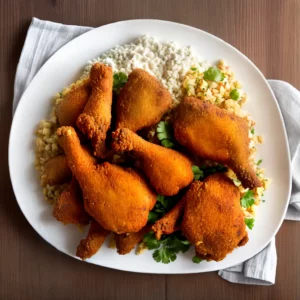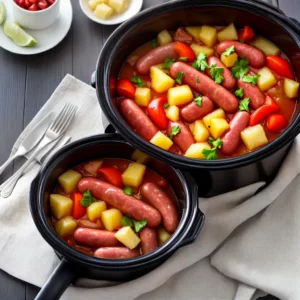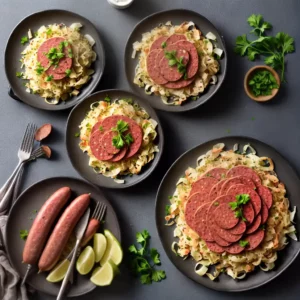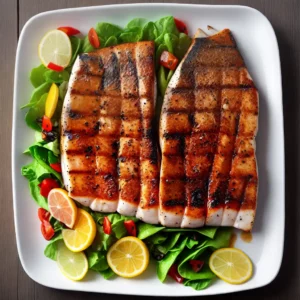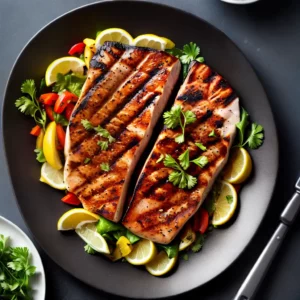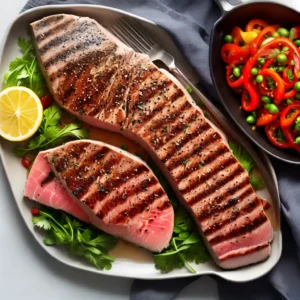How Many Quarts in a Liter
Welcome to our measurement conversion guide, where we’ll answer the frequently asked question, “How many quarts are in a liter?”. Understanding measurement conversions is crucial for successful cooking and recipe measurements. Whether you’re following a recipe or adjusting ingredient amounts, knowing the relationship between quarts and liters is essential.
How Many Quarts in a Liter – Key Takeaways
- There are 1.057 quarts in a liter.
- A quart is equivalent to 32 fluid ounces, 4 cups, 2 pints, and ¼ of a gallon.
- A liter is equal to 1,000 milliliters and approximately 33.8 fluid ounces.
- To convert quarts to liters, divide the number of quarts by 1.057.
- To convert liters to quarts, multiply the number of liters by 1.057.
Now that you have a basic understanding of the quarts-to-liters conversion, you’re ready to explore the world of measurement conversions in cooking. Whether you’re a seasoned chef or an amateur cook, accurate measurements are vital for achieving consistent results in your dishes. Stay tuned for the following sections of our guide, where we’ll dive deeper into volume measurements, explore the metric system, and provide step-by-step instructions on converting quarts to liters and vice versa.
The Basics of Volume Measurement
Before we dive into the conversion between quarts and liters, let’s familiarize ourselves with the basic volume measurement units used in the culinary world. Volume measurement is crucial in cooking and baking as it helps ensure accurate and consistent results in recipes.
There are several units commonly used in the kitchen, including quarts, liters, fluid ounces, cups, pints, and gallons. Understanding the relationships between these units is essential for successful cooking and recipe measurements.
For example, a quart is equal to 32 fluid ounces, 4 cups, 2 pints, and ¼ of a gallon. It is often used for larger quantities of liquids or ingredients. On the other hand, a liter is equal to 1,000 milliliters and is approximately 33.8 fluid ounces. It is commonly used in many parts of the world, especially in countries that adopt the metric system.
To convert quarts to liters, you need to divide the number of quarts by 1.057. For example, if you have 4 quarts, the equivalent in liters would be 3.785 liters. Conversely, to convert liters to quarts, you need to multiply the number of liters by 1.057. If you have 2 liters, it would be equivalent to approximately 2.114 quarts.
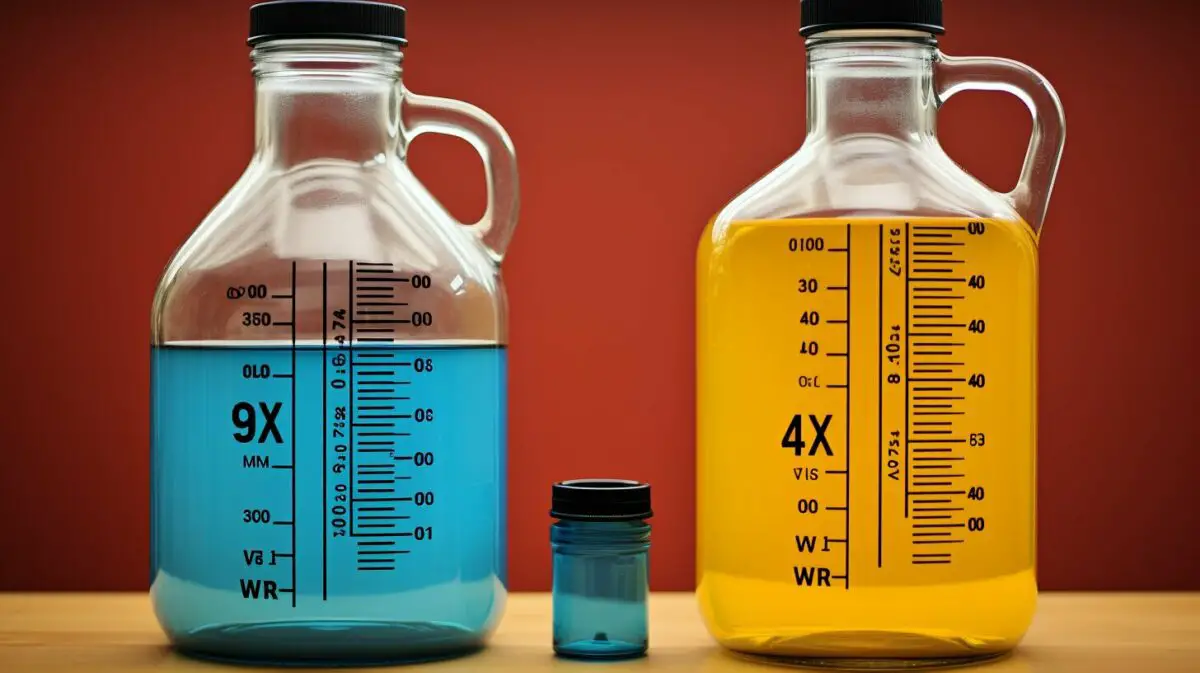
The Conversion Ratio
When converting between quarts and liters, it’s essential to understand the conversion ratio. The conversion ratio for quarts to liters is 1.057, meaning that there are approximately 1.057 quarts in a liter. This ratio allows for accurate and precise measurement conversions in the kitchen.
By familiarizing ourselves with these basic volume measurement units and understanding the conversion ratio between quarts and liters, we can confidently navigate recipe measurements to create delicious dishes with precision and consistency.
| Volume Measurement Units | Equivalents |
|---|---|
| 1 Quart | 32 Fluid Ounces |
| 1 Quart | 4 Cups |
| 1 Quart | 2 Pints |
| 1 Quart | ¼ Gallon |
Understanding the Quart
The quart, commonly used in recipes, is a versatile volume measurement unit that can be broken down into several other commonly used units. In the United States, a quart is equal to 32 fluid ounces, 4 cups, 2 pints, and ¼ of a gallon. This makes it a convenient unit for measuring liquids in cooking and baking. Whether you’re whipping up a batch of homemade soup or following a favorite recipe, understanding the quart and its equivalents will help you achieve accurate measurements.
To give you a better idea of the quart’s relationship to other units of volume measurement, let’s break it down:
| Quart | Fluid Ounces | Cups | Pints | Gallon |
|---|---|---|---|---|
| 1 quart | 32 fluid ounces | 4 cups | 2 pints | ¼ of a gallon |
As shown in the table above, a quart consists of 32 fluid ounces, which is equivalent to 4 cups or 2 pints. It’s important to understand these conversions to accurately measure and convert ingredients in recipes.
Remember: 1 quart = 32 fluid ounces = 4 cups = 2 pints = ¼ of a gallon.
While the quart is commonly used in the United States, it’s worth noting that in many other parts of the world, the liter is the preferred unit of volume measurement. In the next section, we’ll explore the metric system and its use of liters for measuring liquids.
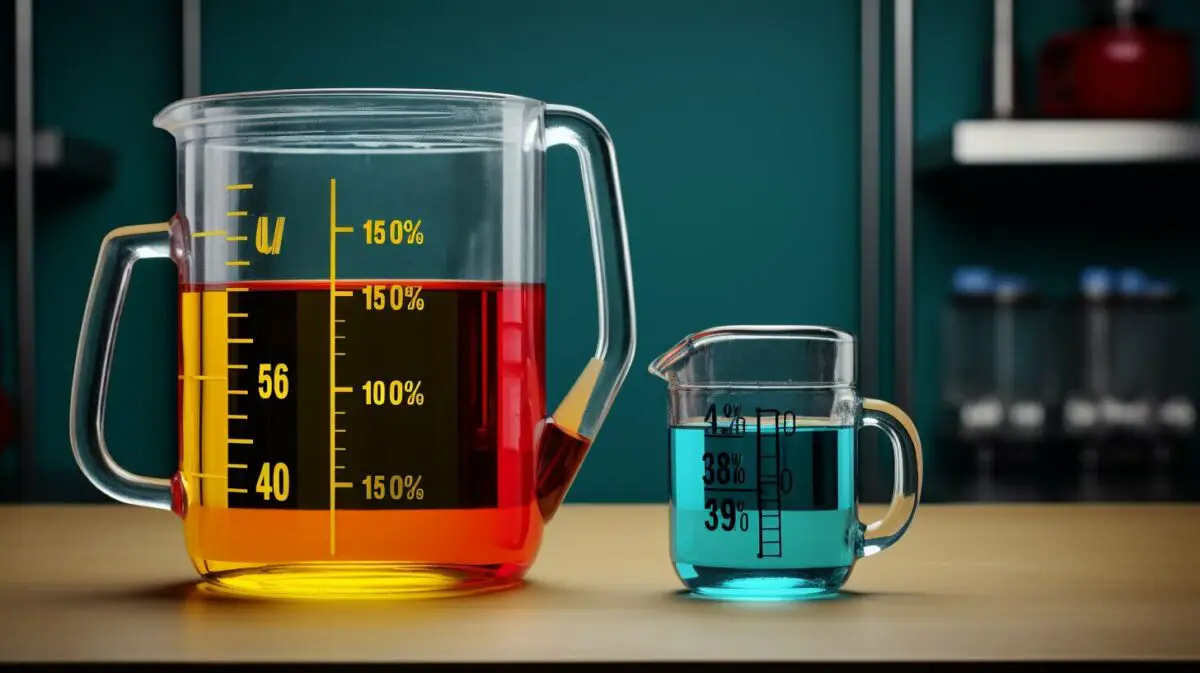
The Metric System and Liters
In contrast to the imperial system, the metric system, which includes the liter as a key volume measurement unit, is widely utilized in various industries, including cooking and scientific fields. The liter is a fundamental unit of volume in the metric system, and it offers a more standardized and easily convertible measurement system compared to the quarts used in the imperial system.
One liter is equivalent to 1,000 milliliters or approximately 33.8 fluid ounces. This makes the liter a versatile unit of measurement for precise recipe calculations and scientific experiments. Whether you’re following a recipe from a cookbook or conducting laboratory experiments, understanding the metric system and its base unit, the liter, is essential for accurate measurements.
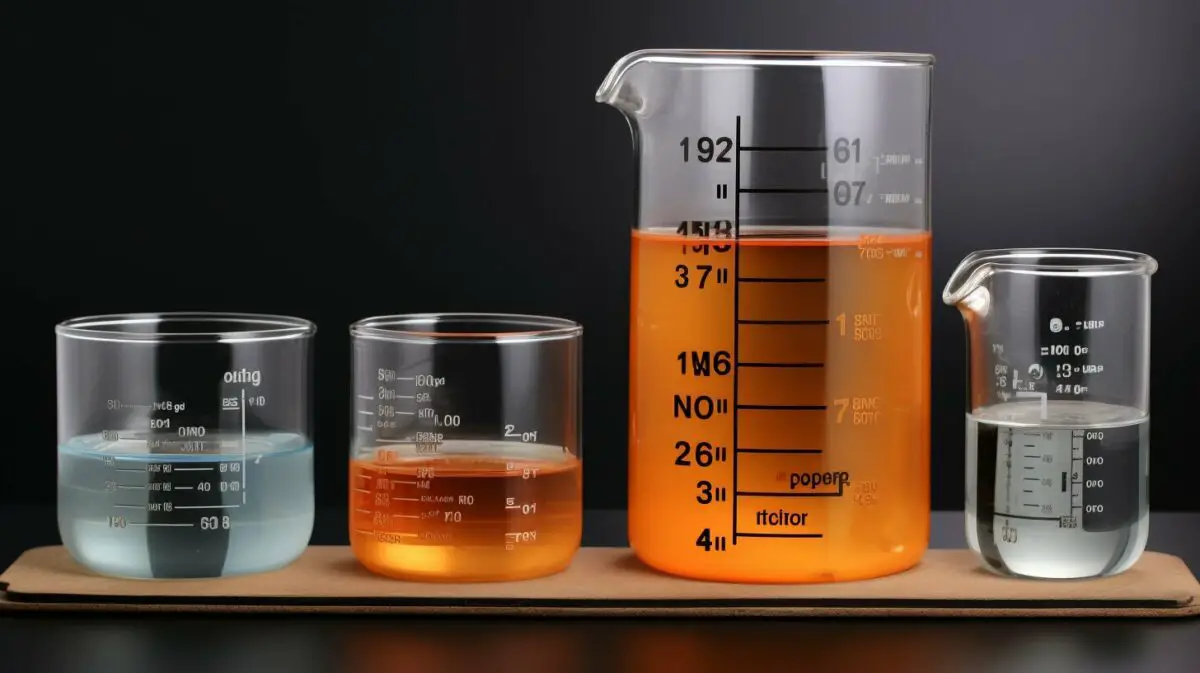
| Unit | Liter Equivalent |
|---|---|
| Milliliter | 1,000 mL |
| Fluid Ounce | 33.8 fl oz |
| Cup | 4 cups |
| Pint | 2 pints |
| Gallon | 1/4 gallon |
Having a clear understanding of the metric system and its unit, the liter, simplifies conversion and ensures consistency across different recipes and scientific calculations. Whether you’re working in the kitchen or the lab, the metric system provides a reliable framework for precise volume measurements.
The Conversion Ratio
To convert between quarts and liters, you need to understand the conversion ratio that allows you to accurately convert measurements. The conversion ratio for quarts to liters is approximately 1.057. This means that there are approximately 1.057 quarts in a liter. Understanding this ratio is essential for successful cooking and recipe measurements.
A quart is a unit of volume commonly used in the United States. It is equal to 32 fluid ounces, 4 cups, 2 pints, and ¼ of a gallon. On the other hand, a liter is a metric unit of volume and is approximately equal to 33.8 fluid ounces. It is also equal to 1,000 milliliters. Knowing these equivalent measurements can be helpful when converting between quarts and liters.
When converting quarts to liters, you divide the number of quarts by the conversion ratio of 1.057. For example, if you have 4 quarts, you would divide 4 by 1.057, which equals approximately 3.785 liters. On the other hand, when converting liters to quarts, you multiply the number of liters by the conversion ratio of 1.057. For instance, if you have 2 liters, you would multiply 2 by 1.057, giving you approximately 2.114 quarts.
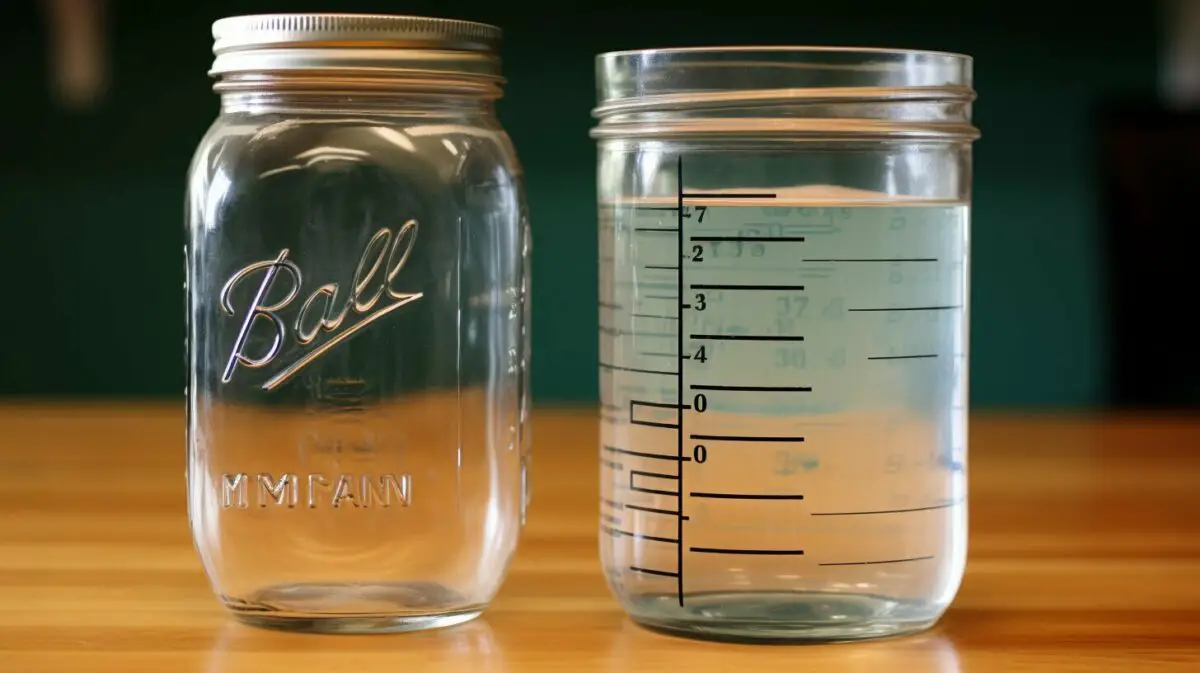
Understanding the conversion ratio between quarts and liters allows you to easily switch between these two volume measurement units. Whether you’re following a recipe from a food blog or adjusting ingredient amounts for your own creations, accurate measurement conversions are key to achieving delicious results in the kitchen.
Quarts to Liters Conversion
Converting from quarts to liters is a straightforward process that requires a simple calculation. Understanding this conversion ratio is essential for accurate recipe measurements and successful cooking. A quart is a commonly used volume measurement unit in the United States, while a liter is the equivalent measurement in the metric system.
There are 1.057 quarts in a liter. This means that to convert quarts to liters, you divide the number of quarts by 1.057. For example, if you have 4 quarts, the conversion would be 4 divided by 1.057, which equals approximately 3.785 liters.
To help you visualize the conversion, here’s a table that shows some common conversions from quarts to liters:
| Quarts | Liters |
|---|---|
| 1 | 0.946 |
| 2 | 1.893 |
| 3 | 2.839 |
| 4 | 3.785 |
Converting quarts to liters is an essential skill for anyone who wants to follow recipes accurately or work with international cuisines that use the metric system. It ensures that your measurements are precise and consistent, resulting in delicious and well-executed dishes. Next, let’s explore the reverse conversion from liters to quarts for even more versatility in the kitchen.
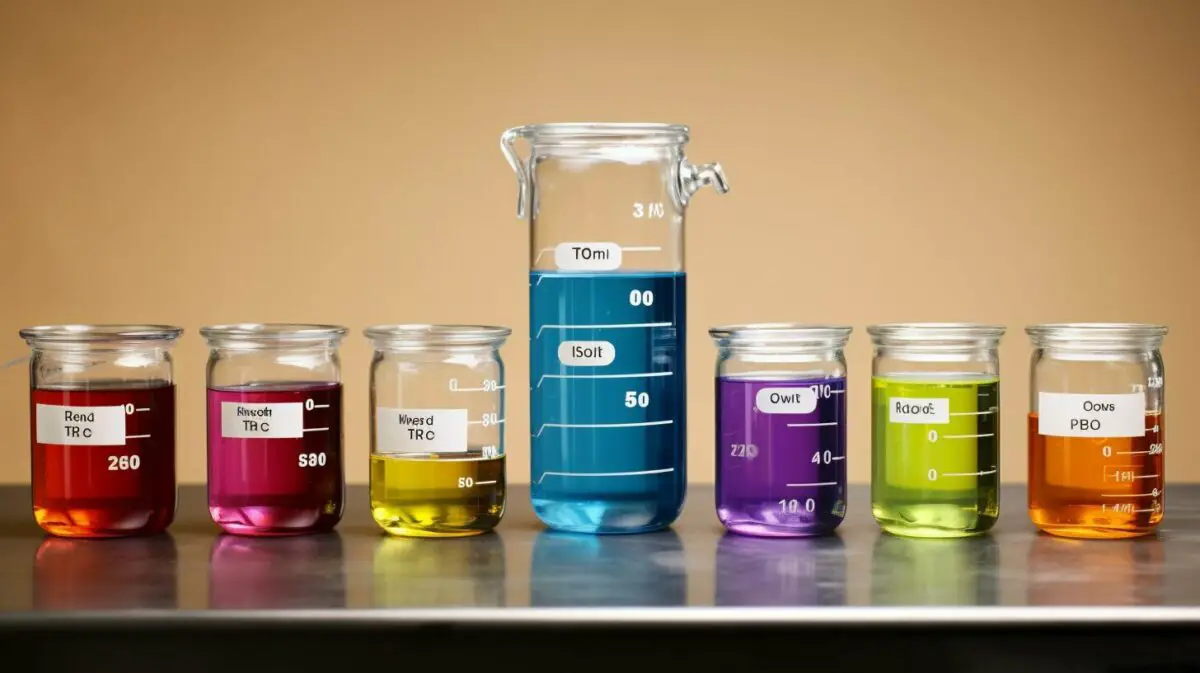
If you have a measurement in liters and need to convert it to quarts, don’t worry – the process is just as easy as converting quarts to liters. Understanding measurement conversions is crucial in cooking, and being able to convert between liters and quarts allows you to follow recipes accurately and achieve the desired results. To convert liters to quarts, you simply multiply the number of liters by 1.057.
For example, let’s say you have a recipe that calls for 2 liters of water and you want to know how many quarts that is. Multiply 2 by 1.057, and you’ll find that 2 liters is approximately equal to 2.114 quarts. This conversion is especially useful when working with international recipes or when using a kitchen scale that measures in liters.
In culinary measurements, a quart is equal to 32 fluid ounces, 4 cups, 2 pints, and ¼ of a gallon. On the other hand, a liter is equivalent to 1,000 milliliters and approximately 33.8 fluid ounces. Understanding these equivalent measurements allows you to navigate between different units of volume and ensures accuracy in your cooking.
| Liters | Quarts |
|---|---|
| 1 | 1.057 |
| 2 | 2.114 |
| 3 | 3.172 |
So, whether your recipe calls for liters or quarts, or you need to adjust a measurement from one unit to the other, knowing the conversion ratio of 1.057 will ensure that your measurements are accurate. Keep in mind that precision in cooking can make a significant difference in the taste and texture of your final dish. So, don’t hesitate to use this simple conversion method and enjoy the culinary adventure!
Utilizing Proper Measurement Tools
Accurate measurements are crucial in cooking, and utilizing the right measurement tools ensures precision and consistency in your recipes. Whether you’re a professional chef or a home cook, having the proper tools in your kitchen can make a world of difference in the outcome of your dishes. Here are some essential measurement tools every cook should have:
- Measuring cups: These cups come in various sizes and are used to measure dry ingredients like flour, sugar, or spices. They usually have markings for different units of measurement, such as cups, ounces, and milliliters.
- Measuring spoons: Measuring spoons are used to measure small amounts of ingredients, such as baking powder, salt, or vanilla extract. They usually come in sets with different sizes, including teaspoon and tablespoon measurements.
- Scales: A kitchen scale is a handy tool for precise measurements, especially for ingredients like meat, fruits, or vegetables. It allows you to measure ingredients by weight, which can be more accurate than using volume measurements.
By using these tools, you can ensure that your measurements are consistent, which is crucial for successful cooking and baking. It’s important to note that different recipes may require different units of measurement, so having a variety of tools at your disposal will make it easier to follow any recipe.
The Importance of Accurate Measurements
“Cooking is both an art and a science, and accurate measurements are the foundation of any successful recipe.”
Accurate measurements not only ensure that your dishes turn out as intended but also play a role in the overall taste and texture of the final product. Too much or too little of an ingredient can alter the balance of flavors and affect the texture of baked goods, resulting in less-than-desirable outcomes.
Using the right measurement tools also allows for consistency in your recipes. If you’re working on creating your own recipes or replicating dishes, accurate measurements ensure that the results will be consistent every time you make them. This is especially important for professional chefs or food bloggers who rely on accurate measurements to provide reliable recipes to their audience.
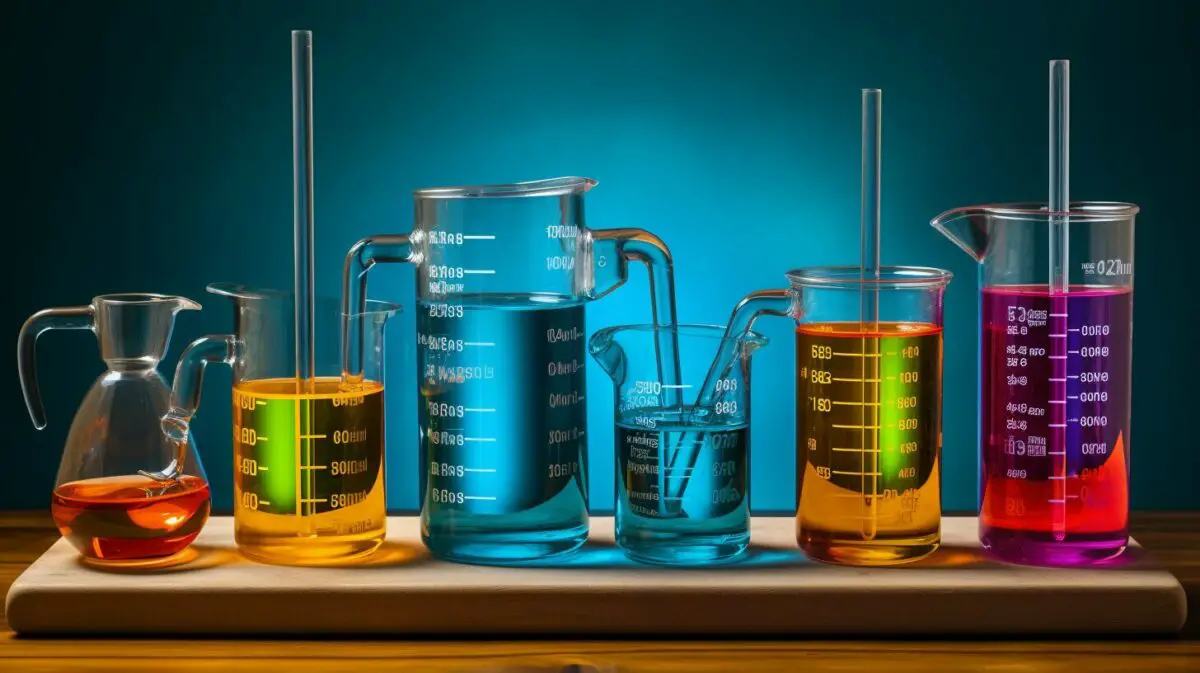
| Measurement Tools | Usage |
|---|---|
| Measuring cups | For measuring dry ingredients like flour, sugar, or spices. |
| Measuring spoons | For measuring small amounts of ingredients like baking powder, salt, or vanilla extract. |
| Scales | For precise measurements of ingredients by weight. |
Having the right measurement tools in your kitchen will not only improve the quality of your cooking but also make the process more enjoyable. Invest in these essential tools and take your culinary skills to the next level!
Measurement Conversion Tips for Cooking
When cooking or baking, knowing how to convert measurements can save you time and ensure your recipes turn out just right. Whether you’re following a recipe from a cookbook or trying out a new creation, understanding how to convert measurements between quarts, liters, fluid ounces, cups, and other units is essential. To help you become a master of measurement conversions, here are some handy tips:
- Know the conversion ratios: Familiarize yourself with the conversion ratios between quarts and liters. Remember that there are 1.057 quarts in a liter. This knowledge will make it easier for you to convert measurements accurately.
- Use conversion charts: Keep a measurement conversion chart handy in your kitchen. It will serve as a quick reference guide when you need to convert between different units. You can find free printable conversion charts online or create your own for easy access.
- Invest in quality measuring tools: Accurate measurements start with reliable tools. Make sure you have a set of measuring cups, measuring spoons, and a scale that provide accurate readings. Using the right tools will ensure your measurements are precise.
- Practice converting measurements: The more you practice converting measurements, the more comfortable you’ll become with the process. Challenge yourself by converting different measurements in your recipes or invent your own conversion exercises. With practice, converting measurements will become second nature.
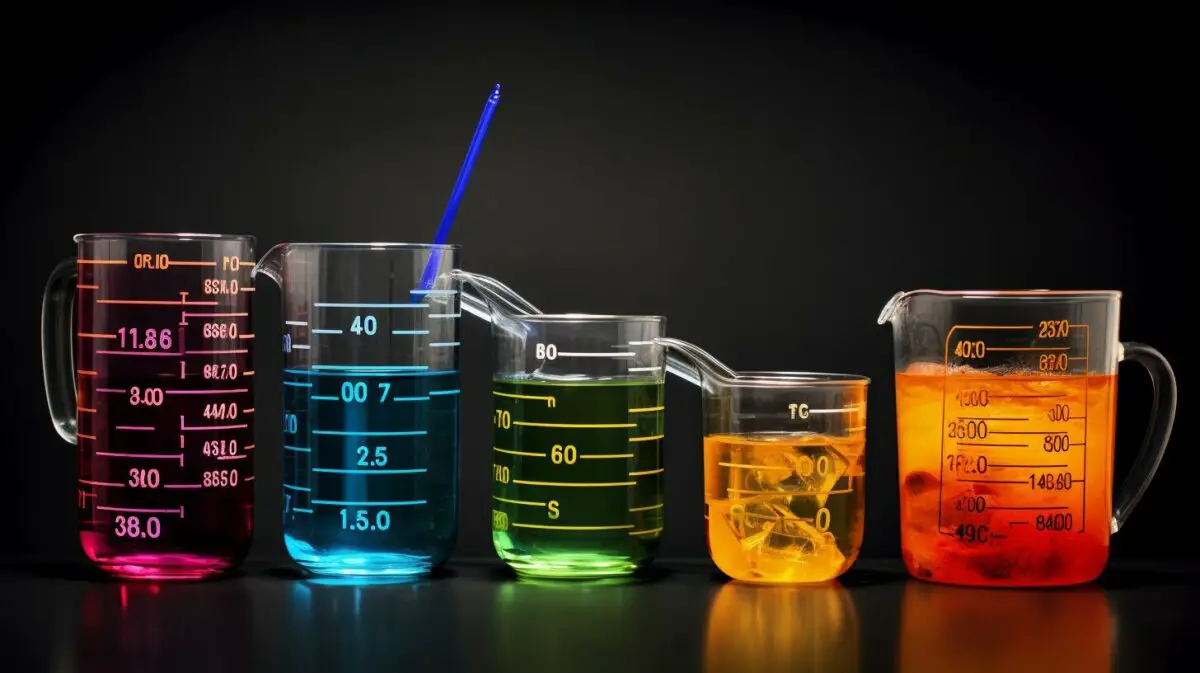
With these measurement conversion tips in mind, you’ll be able to confidently tackle any recipe. Remember, accuracy is key when it comes to cooking and baking, so take the time to convert your measurements correctly. Happy cooking!
Importance of Measurement Accuracy
Achieving measurement accuracy is vital in the culinary world, as slight variations can drastically affect the taste, texture, and overall success of your dishes. Whether you’re a seasoned chef or a novice cook, understanding and applying precise measurements is key to ensuring consistent results in your cooking and baking endeavors.
When it comes to cooking, especially when following recipes, precision is crucial. Incorrect measurements can throw off the delicate balance of flavors and textures, resulting in a disappointment on the dinner table. Imagine adding just a little too much salt or baking powder to your dish—it can completely alter the taste and ruin your efforts.
To avoid measurement mishaps, it’s important to familiarize yourself with conversion ratios and use the appropriate measuring tools. A slight deviation from the recommended amount of an ingredient can lead to a culinary catastrophe or an underwhelming outcome.
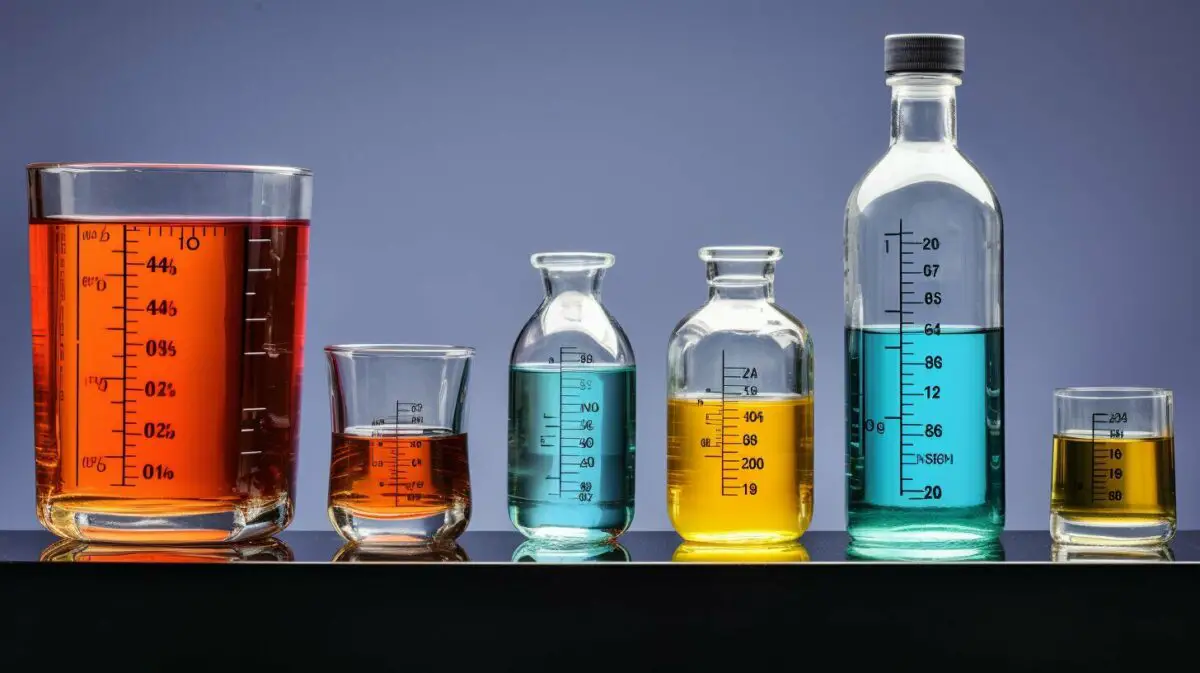
The Conversion Ratio
One essential conversion to grasp is the relationship between quarts and liters. A quart is equivalent to 32 fluid ounces, 4 cups, 2 pints, and ¼ of a gallon. On the other hand, a liter is equal to 1,000 milliliters and approximately 33.8 fluid ounces. Understanding this conversion ratio—1.057 quarts in a liter—allows you to convert measurements accurately in your recipes.
| Quarts | Liters |
|---|---|
| 1 | 0.95 |
| 2 | 1.90 |
| 3 | 2.85 |
For example, if a recipe calls for 3 quarts of water but you only have a liter measuring cup, knowing that 1 quart is approximately 0.95 liters would help you decide to use three liters instead. This ensures you’re adding the correct amount of water for the recipe, maintaining the integrity of the dish.
By prioritizing measurement accuracy, you can achieve consistency in your cooking, enhance the overall quality of your dishes, and gain confidence in experimenting with recipes. So, the next time you step into the kitchen, remember the importance of precise measurements—it might just be the secret ingredient to culinary perfection!
Conversion in Everyday Kitchen Tasks
Whether you’re a professional chef or a home cook, having a grasp of measurement conversions is essential for everyday kitchen tasks and following recipes from various sources. Understanding how to convert between quarts and liters can save you time and ensure your dishes turn out just right. So, let’s dive into some practical applications of measurement conversions in the kitchen!
One common scenario where measurement conversions come in handy is when following recipes from food blogs or organizations. Recipes often provide measurements in a specific unit, and if you don’t have the right tools or ingredients, you may need to make adjustments. Being able to convert from quarts to liters or vice versa allows you to adapt the recipe to the measurement units you have available.
Measurement conversions are also crucial for achieving accurate portion sizes and servings. If a recipe calls for a certain amount of liquid in quarts, but you only have a liter measuring cup, knowing the conversion can help you measure the correct amount. This ensures your dishes are consistent and taste just as delicious every time.
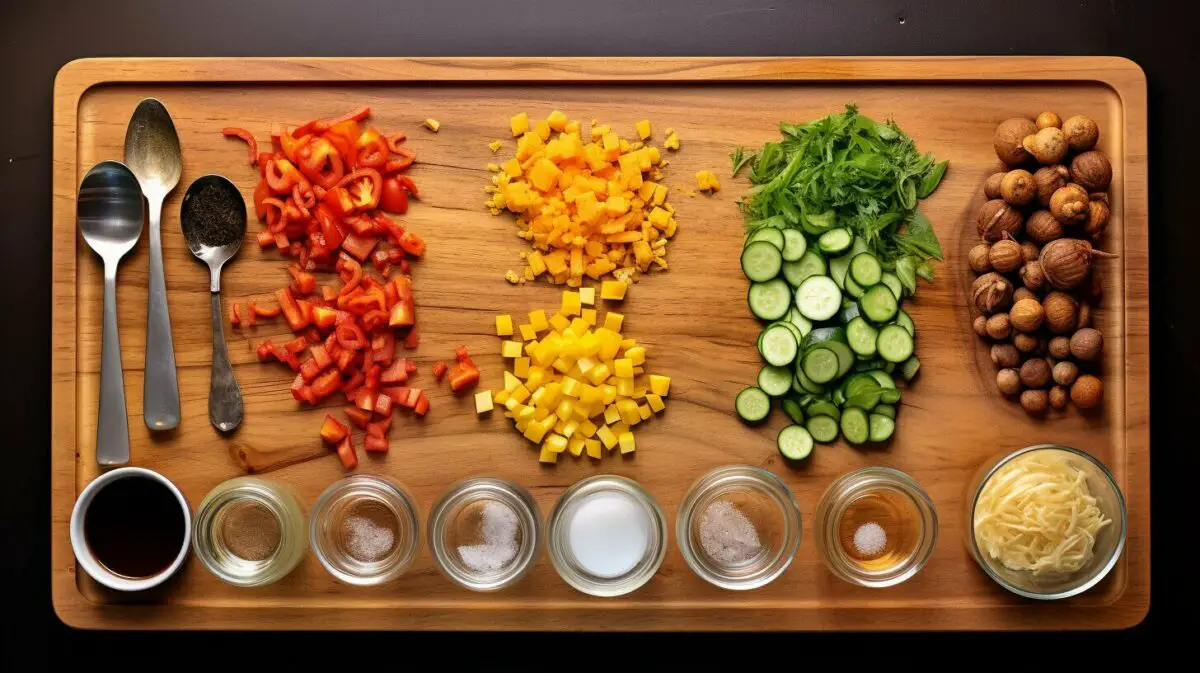
Additionally, understanding measurement conversions can help you utilize measurements from different cultures and international cuisines. Many traditional recipes from around the world use measurement units that may be unfamiliar to you, such as liters. By converting these measurements to quarts or vice versa, you can explore new flavors and cooking techniques without being limited by unfamiliar units.
In summary, measurement conversions play a vital role in everyday kitchen tasks, allowing you to follow recipes accurately, adapt to different measurement units, and ensure consistent results. So, the next time you’re in the kitchen, remember the conversion ratio of 1.057 quarts per liter and confidently conquer any recipe that comes your way!
The Role of Measurement Conversions in Food Writing
Measurement conversions play a significant role in the realm of food writing, journalism, and media, ensuring precise and reproducible recipes for readers to enjoy. As food writers, it is our responsibility to provide accurate measurements that allow home cooks and aspiring chefs to recreate dishes with confidence and precision. Whether it’s a classic family recipe, a trendy culinary creation, or a traditional dish from another culture, understanding and conveying the correct measurements is essential.
When it comes to food journalism and media, measurement conversions go beyond just providing information for recipes. They also aid in proper ingredient portioning and help readers understand the quantities needed for specific dishes. Whether it’s a cup of flour, a teaspoon of salt, or a liter of stock, accurate conversions ensure that readers can replicate the intended flavors and textures.
Furthermore, measurement conversions enable food writers to explore and share international cuisines with their readers. By understanding how different cultures use specific measurement units, we can bridge culinary gaps and promote cross-cultural understanding through food. For instance, converting American cups to grams for a French pastry recipe or converting liters to fluid ounces for a Mexican salsa recipe allows readers from various backgrounds to dive into global culinary experiences.
To illustrate the significance of measurement conversions in food writing, let’s consider a recipe for a classic French coq au vin. By providing precise measurements such as liters for the wine and milliliters for the chicken broth, food writers ensure that readers can follow the recipe accurately. This attention to detail not only enhances the credibility of the recipe but also allows home cooks to experience the rich flavors of this iconic dish, just as it would be prepared in a French kitchen.
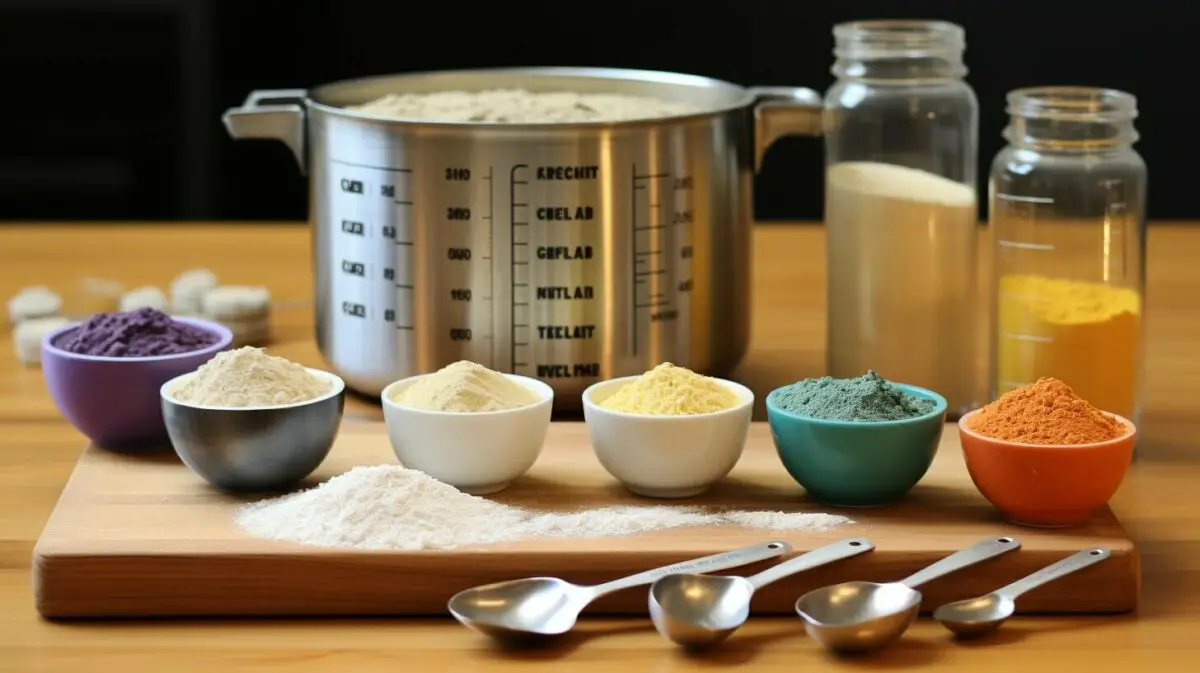
| Measurement Units | Quarts | Liters |
|---|---|---|
| Fluid Ounces | 32 | 0.946 |
| Cups | 4 | 0.946 |
| Pints | 2 | 0.473 |
| Gallons | 0.25 | 3.785 |
| Milliliters | 946 | 1,000 |
Exploring Food Culture Through Measurement Conversions
Understanding measurement conversions not only enhances your culinary skills but also allows you to appreciate and explore diverse food cultures from around the world. The food industry is a melting pot of flavors, techniques, and traditions, each with its own unique way of measuring ingredients. By delving into the world of measurement conversions, you gain a deeper understanding of the cultural significance behind different cooking methods and recipes.
Measurement conversions play a vital role in deciphering recipes from various cuisines. Whether you’re exploring the vibrant spices of Indian cuisine or the delicate flavors of French patisserie, understanding the different units of measurement used in these culinary traditions is essential. It allows you to recreate authentic dishes and experience the true essence of a particular food culture.
For example, when venturing into Mexican cuisine, you’ll often encounter recipes that use the metric system, with measurements in liters and grams. Understanding the conversion between quarts and liters enables you to navigate these recipes effortlessly, ensuring accurate ingredient quantities and a true taste of Mexican culture.
| Culture | Measurement Units | Conversion Ratio |
|---|---|---|
| Mexican | Liters, Grams | 1 Liter = 1.057 Quarts |
| Indian | Cups, Teaspoons | 1 Quart = 0.946 Liters |
| French | Milliliters, Grams | 1 Liter = 33.8 Fluid Ounces |
Exploring food culture through measurement conversions is not only fascinating but also allows you to expand your culinary horizons. It opens doors to new recipes, flavors, and traditions, enhancing your overall cooking experience. So the next time you’re in the kitchen, embrace the world of measurement conversions and embark on a culinary journey around the globe.
Conclusion – How Many Quarts in a Liter
Mastering measurement conversions opens up a world of culinary possibilities, ensuring accuracy, and expanding your cooking horizons. Understanding the relationship between quarts and liters is essential for successful cooking and recipe measurements. In the world of volume measurement, a quart is equivalent to 32 fluid ounces, 4 cups, 2 pints, and ¼ of a gallon. On the other hand, a liter is equal to 1,000 milliliters and approximately 33.8 fluid ounces.
To convert quarts to liters, divide the number of quarts by 1.057. Conversely, to convert liters to quarts, simply multiply the number of liters by 1.057. These conversion ratios allow you to seamlessly switch between these two common volume measurement units in your culinary endeavors.
Accurate measurement conversions are crucial in achieving precise and consistent results in cooking. Whether you’re following a recipe, adjusting ingredient amounts, or exploring international cuisines, understanding measurement conversions ensures that your dishes turn out just right. By utilizing proper measurement tools such as measuring cups, spoons, and scales, you can achieve the desired taste, texture, and presentation of your culinary creations.
Measurement conversions also play a vital role in the world of food media and writing. Reliable recipe instructions rely on accurate conversions, allowing readers to reproduce dishes with confidence. Furthermore, understanding measurement conversions allows us to delve deeper into food culture and explore the rich culinary traditions of different countries, enhancing our appreciation for global cuisines.
FAQ – How Many Quarts in a Liter
Q: How many quarts are in a liter?
A: There are approximately 1.057 quarts in a liter.
Q: What is the conversion ratio for quarts to liters?
A: To convert quarts to liters, divide the number of quarts by 1.057.
Q: How do I convert liters to quarts?
A: To convert liters to quarts, multiply the number of liters by 1.057.
Q: What are the equivalent measurements of a quart?
A: A quart is equal to 32 fluid ounces, 4 cups, 2 pints, and ¼ of a gallon.
Q: What is the metric equivalent of a liter?
A: A liter is equal to 1,000 milliliters.
Q: Why is understanding measurement conversions important in cooking?
A: Understanding measurement conversions is crucial for successful cooking and accurate recipe measurements.
Q: What measurement tools should I use for precise measurements?
A: It is essential to utilize accurate measurement tools such as measuring cups, measuring spoons, and scales.
Q: Can you provide some measurement conversion tips for cooking?
A: When converting measurements in cooking, it is helpful to refer to a conversion chart and adjust ingredient amounts accordingly.
Q: How does measurement accuracy impact cooking and baking?
A: Measurement accuracy is vital in achieving consistent and desired results in dishes and recipes.
Q: How can measurement conversions enhance food writing and journalism?
A: Accurate measurement conversions in food writing and journalism provide clear and reliable recipe instructions for readers to replicate dishes.
Q: Why is understanding measurement conversions important in exploring food culture?
A: Different cultures utilize specific measurement units, and understanding conversions allows for immersion and accurate replication of international cuisines.
Q: What are some everyday kitchen tasks that require measurement conversions?
A: Everyday kitchen tasks such as meal preparation, following recipes from food blogs or organizations, and portion control rely on accurate measurement conversions.
Our Friends:
- https://www.metric-conversions.org/volume/liters-to-us-liquid-quarts.htm
- https://livelytable.com/cooking-conversions/how-many-quarts-in-a-liter/
Related Recipes:
 How Many Cups Are in a Liter: Unlocking the Mystery
How Many Cups Are in a Liter: Unlocking the Mystery
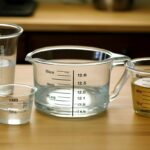 How Many Cups Are in a Liter? (Perfect Measurement Conversion Guide)
How Many Cups Are in a Liter? (Perfect Measurement Conversion Guide)
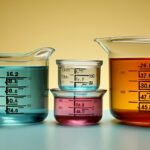 How Many Ounces Are in a Quart? (Ultimate Measurement Conversion Guide)
How Many Ounces Are in a Quart? (Ultimate Measurement Conversion Guide)
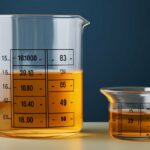 How Many Milliliters in a Quart? (Perfect Measurement Conversion Guide)
How Many Milliliters in a Quart? (Perfect Measurement Conversion Guide)
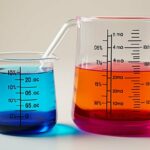 How Many Milliliters in an Ounce? (Perfect Measurement Conversion Guide)
How Many Milliliters in an Ounce? (Perfect Measurement Conversion Guide)
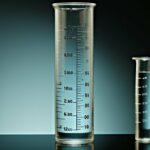 How Many Milliliters in a Liter? (Measurement Conversion Guide)
How Many Milliliters in a Liter? (Measurement Conversion Guide)
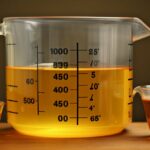 How Many Ounces Are in 750 ml? (Measurement Conversion Guide)
How Many Ounces Are in 750 ml? (Measurement Conversion Guide)
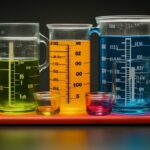 How Many Cups Are in a Quart? (Perfect Measurement Conversion Guide)
How Many Cups Are in a Quart? (Perfect Measurement Conversion Guide)


